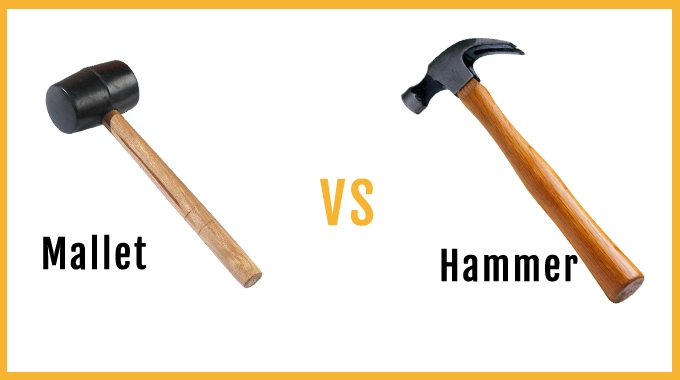Last Updated on January 20, 2023
Mallets are generally regarded as being the same as hammers. These blunt instruments are used to strike objects with their blunt ends. Although mallet and hammer may appear identical, there are a number of differences between these two indispensable tools.
The hammer describes a hand tool consisting of a handle attached to a metal head with a blunt end used for striking. A mallet is a flat-headed hammer, usually made of timber or rubber head. Mallets, unlike hammers, are primarily used to hit other tools, such as chisels and axes.
At first glance, hammers and mallets resemble each other, but they serve different purposes. Read on for detailed information about the significant differences between them.
Differences Between Mallet VS Hammer
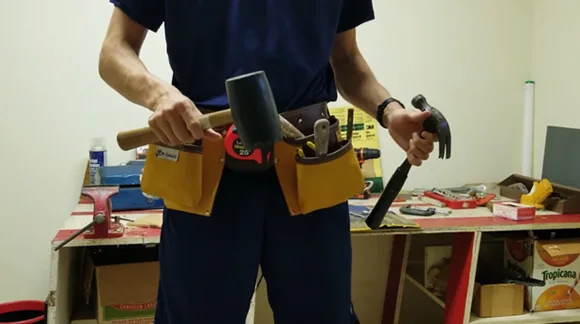
At first glance, mallets and hammers may seem like very similar tools. Some people might say that a mallet is simply a larger version of a hammer, while others might say that it is designed for softer materials.
Both are used for hitting things and have a blunt head attached to a wooden or metal handle. But, there are some key differences between mallets and hammers, such:
Unit Size:
Hammers are typically smaller than mallets, with longer handles and smaller heads. This makes them ideal for hammering nails into small spaces, such as when hanging pictures or assembling furniture.
Mallets have larger heads and longer handles. This gives them more power, making them better suited for tasks like pounding out dents or shaping metal.
Head Construction:
The most notable difference between a hammer and a mallet is head construction. A mallet typically has a round cylindrical mallet head constructed from a supple material, while a hammer has a flat metal head with a flat surface. The different shapes of the heads provide additional benefits.
The round wooden head of a mallet is well-suited for striking soft materials without causing breakage, making it ideal for use on soft objects such as stone or glass. A hammer’s flat head is perfect for tapping nails into hard surfaces.
Head material:
Between mallets and hammers, the main difference is the material used for the head. Mallets have heads made of softer materials like rubber, wood, or plastic, while hammers have metal heads. The different materials allow each tool to excel at different tasks.
Mallets are better for delicate work, as they won’t mar the surface of the material you’re working on. They’re also less likely to cause injury if you swing them incorrectly.
Alternatively, hammers are ideal for striking nails or breaking through more rigid materials. The metallic head makes them much more durable, but it also means that they can do more trouble if misused.
Head Shape:
A mallet can be distinguished from a hammer by its cylindrical head shape. A mallet has a broader, flatter head, while a hammer has a narrower, more pointed head. The different forms of the heads are due to the different purposes for each tool used.
Different head shapes also affect how each tool feels when used. A mallet feels more balanced and stable in hand, while a hammer feels more top-heavy and less stable.
Striking Force:
Mallets and hammers are used as tools to strike an object, but they have different functions. A ball-peen hammer is meant to pound nails into wood or break something, while a mallet is used to pound on other tools, like chisels.
A mallet has a larger head, which gives it a more striking force. This makes it better for pounding on other objects without damaging them. Also, the handle of a mallet is usually longer than the handle of a hammer, which provides more leverage and makes it easier to apply pressure.
Impact Power:
Mallets are usually made with a larger head, which helps distribute the force over a larger area. This makes it ideal for working with sensitive materials that could be harmed by a more focused blow from a hammer.
A steel-head hammer has more impact power than a rubber mallet because it has a metal head designed to penetrate hard surfaces. Hammers typically have a smaller head, concentrating the force into a smaller area. These properties make them excellent for inserting nails into concrete or wood.
Weight:
Hammers are generally much lighter than mallets, so they can be swung with more force, making them easier to use for extended periods without tiring the user’s arm.
In contrast, rubber mallets are designed to be heavier, delivering a more powerful blow without impacting the tool or material being struck. This makes them ideally suited to jobs requiring a lot of power, such as pounding chisels or forming metal.
Price:
In terms of price, hammers are typically more expensive than mallets since they are specialized for a specific purpose. Then again, mallets can also be quite costly, depending on the materials used.
For instance, wooden mallets are often less expensive than rubber ones, but they may not withstand repeated use as well. Ultimately, the price of a hammer or mallet depends on its intended use and the quality of its construction.
These are the most common differences between hammers and mallets. Choosing the right tool for the job will depend on the task and the materials you’re working with.
Check Out: Does an Air Hammer Break Concrete?
Purpose of Using a Hammer and a Mallet
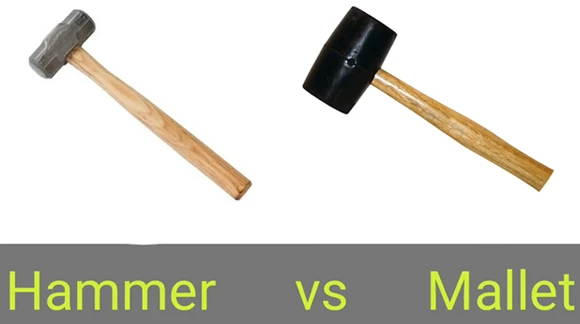
Both of these tools have a long history of use, and each serves a specific purpose.
Hammers are typically used:
- General carpentry
- Cabinet making
- Driving or Pulling nails
- Upholstering
- Construction framing
- Assembling furniture
- Bending or shaping metal
- Striking drill and steel cutters, etc
Mallets are better suited for:
- Knocking wooden pieces together
- Driving dowels or chisels
- Tapping pavers or bricks into the sand
- Shift panels of drywall into place
- Gently tap ceramic or stone tiles into place
- Tighten up joints in luxury vinyl tile
- Close paint can lid
- Snug up joints in PVC pipe
- Vibrate concrete forms
- Shape the clay
Check Out: What is the correct way to use a sledgehammer?
How Do You Choose a Mallet or a Hammer for the Job at Hand?
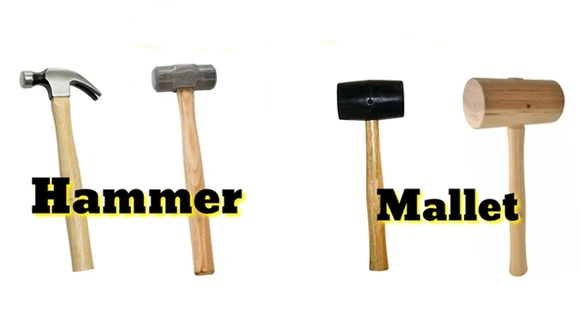
Choosing the proper tool for the work is essential for any project, big or small. Regarding hammers, there are two main types to choose from: mallets and hammers. Let’s discuss how to decide which one to use:
01. Know Your Project
Choosing the right hammer or mallet is dependent on your project. If you’re working on something delicate, like a piece of jewelry, you’ll need a smaller and lighter instrument to avoid ruining it.
For something like pounding nails, you’ll need a heavier claw hammer to deliver a more powerful blow. And for projects that require precision, like woodworking, you’ll need a wooden mallet with a flat head to avoid destroying your work.
02. Weight is Key for a Powerful Blow
When most people think about hammers and mallets, they think about the tool itself. But, the tool’s weight is more important than the size. A heavier hammer or dead blow mallet will strike harder, making it ideal for tasks that require extra force.
Also, a heavier device is less likely to bounce off the surface, making it easier to control. Of course, a more severe tool can also be more difficult to swing, so it’s essential to find a balance that suits your needs.
03. Consider the Handle
A hammer or mallet’s handle is another important consideration. A longer handle will provide more leverage, making applying pressure easier. Meanwhile, a shorter handle can be easier to control.
It’s also important to consider the material of the handle. Wood and plastic handles are typically less expensive, but they can also break more easily. Metal handles are more durable but can be more challenging to grip.
04. Consider the Leverage
It is essential to consider the amount of leverage that each instrument provides. Lengthened handles provide greater leverage, giving you more power when swinging the device. Still, a shorter handle will be easier to maneuver in tight spaces.
A claw hammer, for example, typically has a more extended handle than a mallet, which gives the user more leverage when hitting a nail. Yet, a rubber mallet delivers more force per strike than a hammer, making it better suited for projects that need more power.
05. Know Your Material
Consider the type of material you will be working with when choosing a hammer or mallet. Metal can handle more force than wood, so a metal hammer is a good choice if you plan to do some serious pounding.
If you’re working with delicate materials like glass or ceramic, you’ll need to use a softer object, such as a rubber mallet, to avoid breaking the surface. Knowing your material will help you choose the appropriate equipment.
Check Out: What Is SDS Plus and SDS Max?
FAQs
Let’s take a look at some frequently asked questions about hammers and mallets:
Q: Can You Use a Wooden Mallet Instead of a Hammer?
Mallets can be used instead of hammers, depending on the material you’re trying to pound. A hammer would be better suited if it’s something like metal or stone because it has a harder surface. A mallet is typically made of rubber, wood, or plastic, so it will not be as effective at breaking through tougher materials.
Q: Is a Mallet Better than a Hammer for Driving a Chisel?
A mallet is better for hitting a chisel without bending its tip. Hammers have metal heads that can harm a chisel’s delicate edges. Mallets have gentler wood or rubber heads on a chisel’s tip. If you’re serious about carpentry and woodworking, it’s worth investing in a mallet.
Q: What Can I Use Rather than a Hammer?
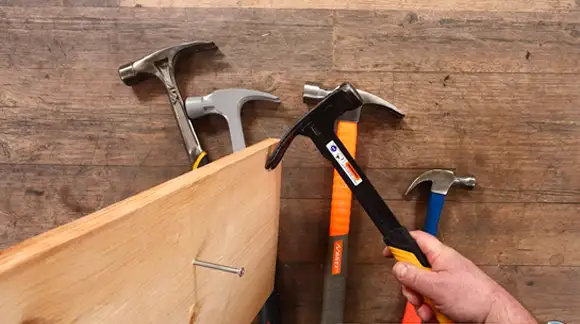
You can use many things like a hammer in a pinch: a rock, a brick, or even a rolling pin made with hard material. Just be sure to use something heavy to create force when you hit the object you are trying to drive the nail into.
Q: What if I Use a Hammer Instead of a Rubber Mallet?
Instead of using a rubber mallet, a hammer can cause a dent, deform or crack in the workpiece. The purpose of a mallet is to strike a workpiece, whereas a hammer does not. Hammers have round heads that can easily slip off the workpiece and cause destruction.
Conclusion
There are several different purposes for mallets and hammers. The correct tool should be selected based on the material you are working with and the amount of blunt force required.
Whether you need a tool for driving nails into sturdy materials or one that is gentle enough to use on delicate surfaces, a hammer or mallet is available. With so many different types of hammers and mallets available, choosing the appropriate one for your needs can be challenging.
Considering the factors we outlined above, this article will help you choose the best tool for your needs.
